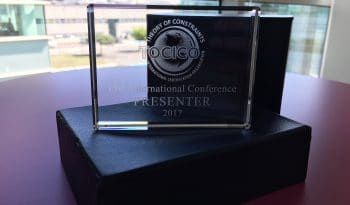During its growth, AGILEA was able to participate to the TOCICO conference in July 2017. TOCICO is a certification organism that offers annually a magazine with case studies and new practices; linked to the Theory Of Constraints.
AGILEA had the honor to step in about the critical chain and manufacturing approaches. In the following months we will come back on the different presentations that marked this annual conference.
When we talk about company’s strategy, it is a process that must be communicated threw all the company as seen in a previous article [A].
However, it often happens that those strategies are difficult to understand through concrete actions for the team.
It often leads to a presentation of all the projects; where everybody is satisfied but still asking themselves how to realize those projects.
In addition, all projects do not have the same weight or do not have the same leadership.
Thereby it happens that after a few months, this communication presentation become only a faraway memory; Full of great ideas but with few results!
In reality the problem comes from the management linked to those projects. Those projects are often represented by an initiatives’ list displayed at different places of the company.
The problem is that if we represent those projects in terms of flow, it leads to that kind of representation:

Thereby, all projects are in progress, resources are mixed in different projects; and are not able to identify what is a priority or with strong impact anymore.
What critical chain approaches offer is to add the pipelining concept. It consists of positioning the different projects in the work in progress coupled to the resources affected to those projects.
We obtain a relevant number of projects in the pipeline which are manageable for the teams and board of directors.
We could ask the following question:
is it better to have 12 projects realized in 12 months or 2 projects realized in 2 months?
With this approach, the flow of projects could look like this:

Some projects are “frozen” and will be waiting the end of other projects to start and go faster. Usually it is the steering committee that decides when to launch the projects and under which criteria.
For example, one of the rules could be to start one project when another one is closed.
This simple rule allows to control the work in progress of projects.
Moreover, having frozen projects enables the use of resources to establish plans of other projects in which they are associated.
Very often, we can see this initiatives’ list, but we have troubles to understand what is hidden behind those projects.
This is why, one of the first task before starting a project could be to build a range of projects; including deliverable, data input and other associated actions.
With this approach;
- the steering committee has the initiatives list and the launching rules,
- the team can build the different elements of the project and highlight the major associated challenges.
Sources :
[A] To what extent your company’s strategical plans are understood by your teams ?

